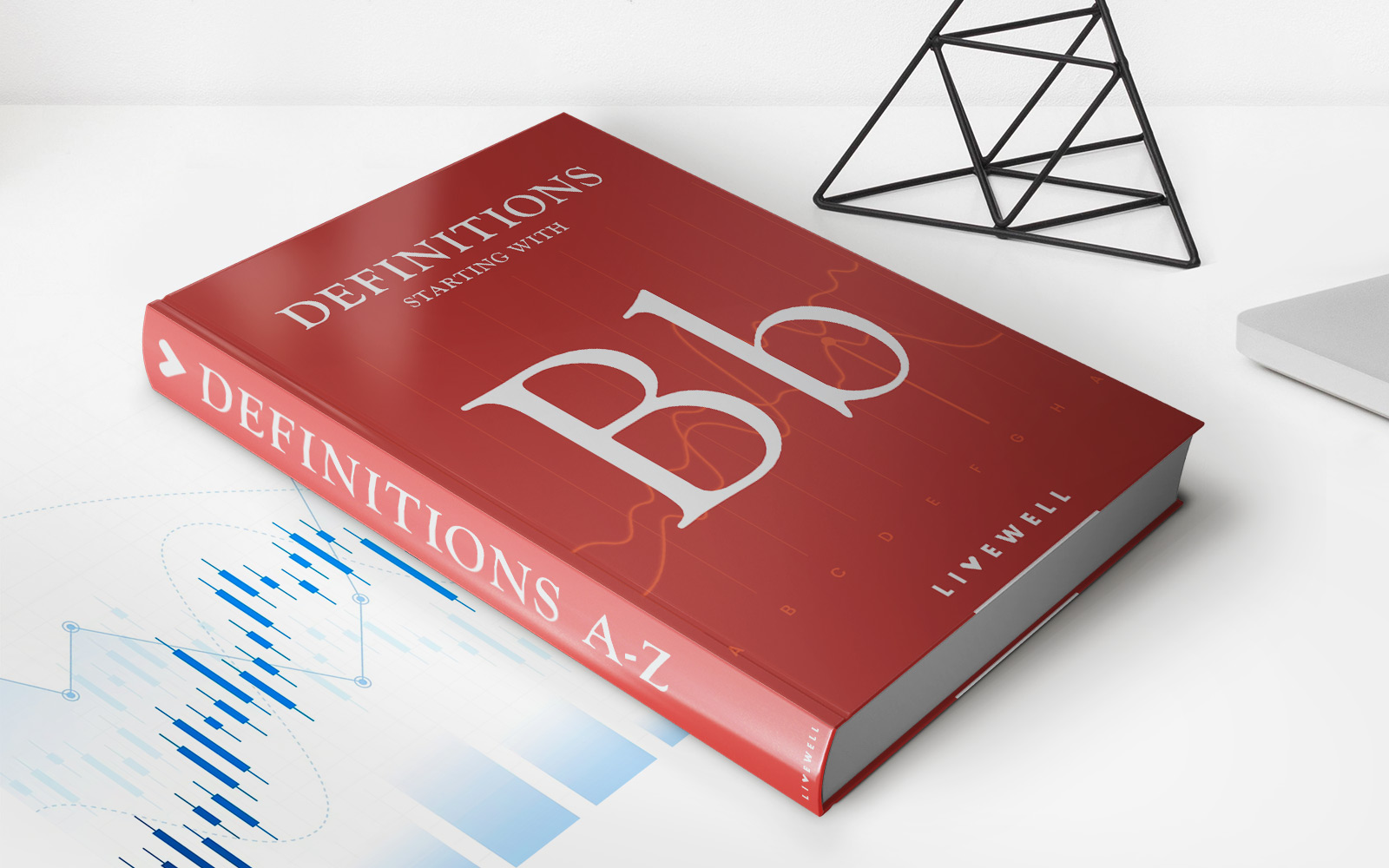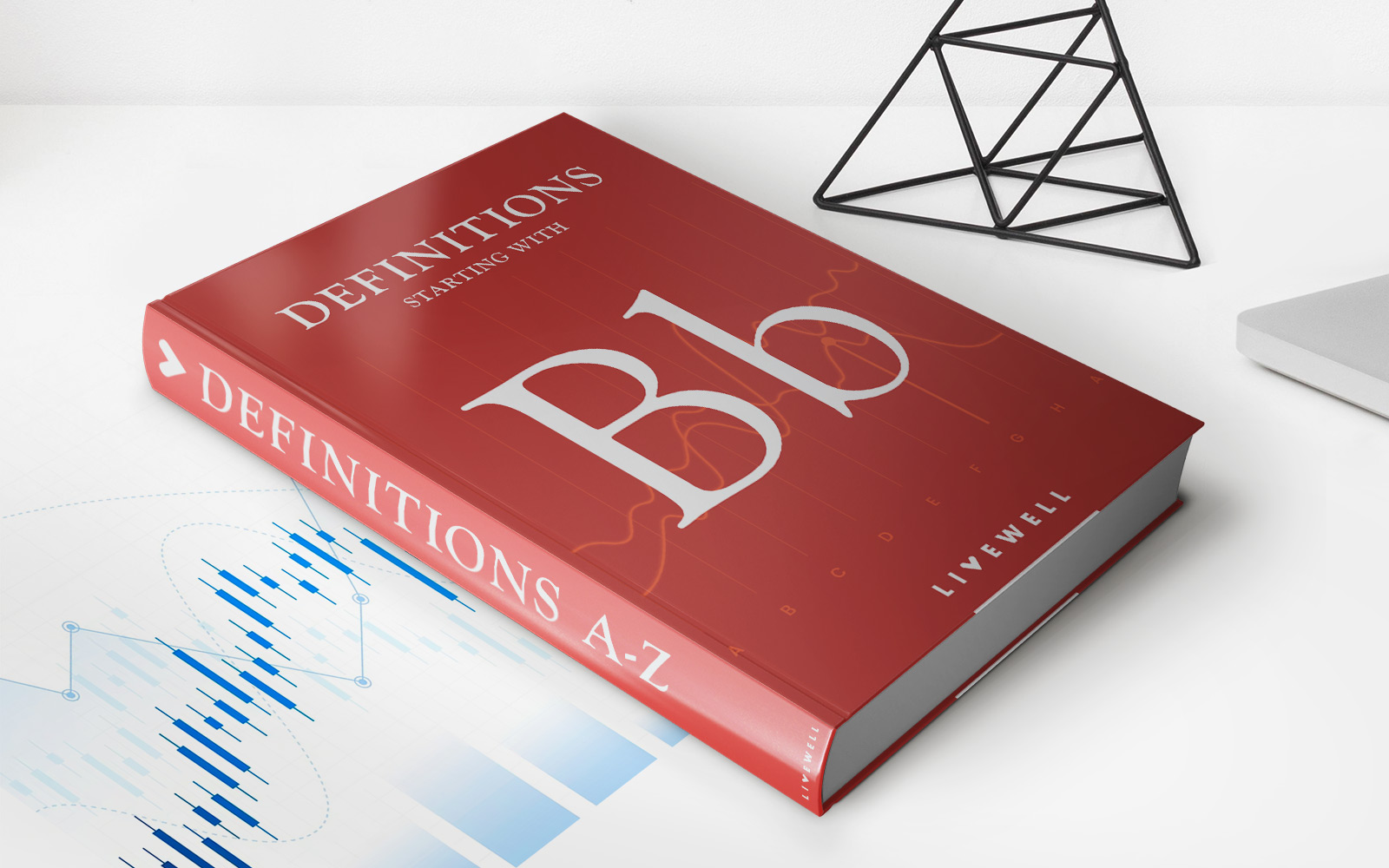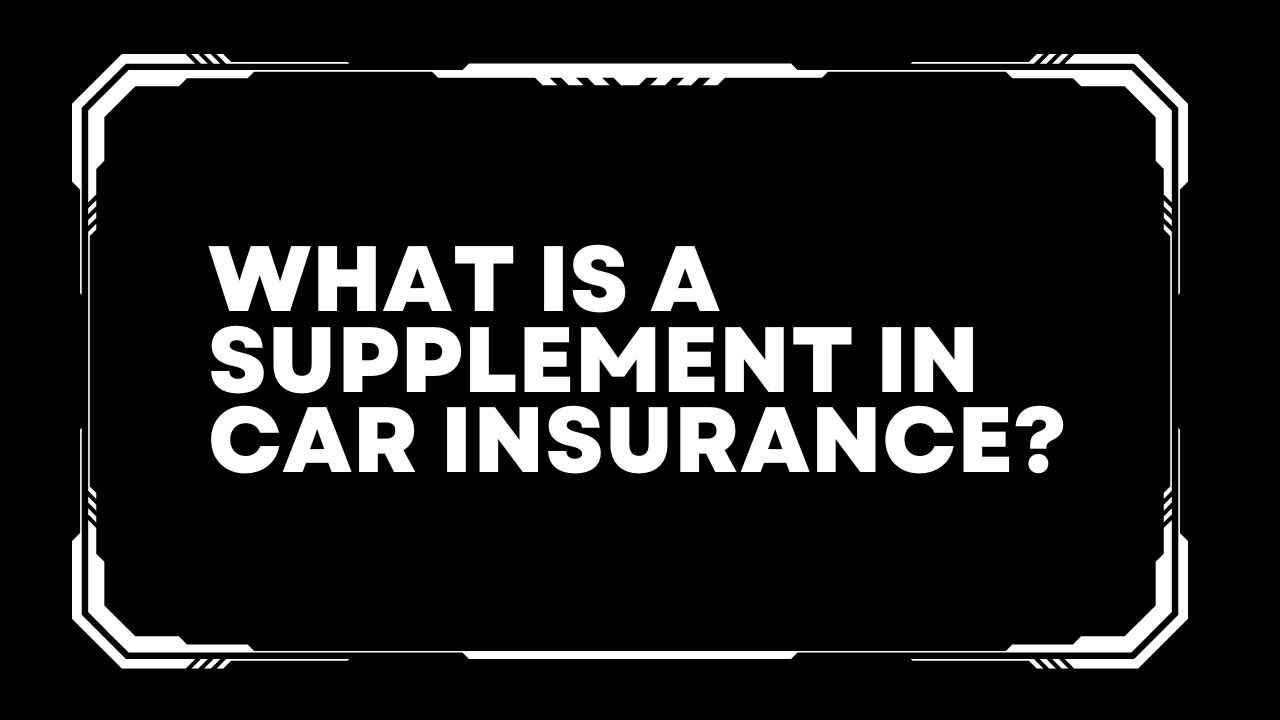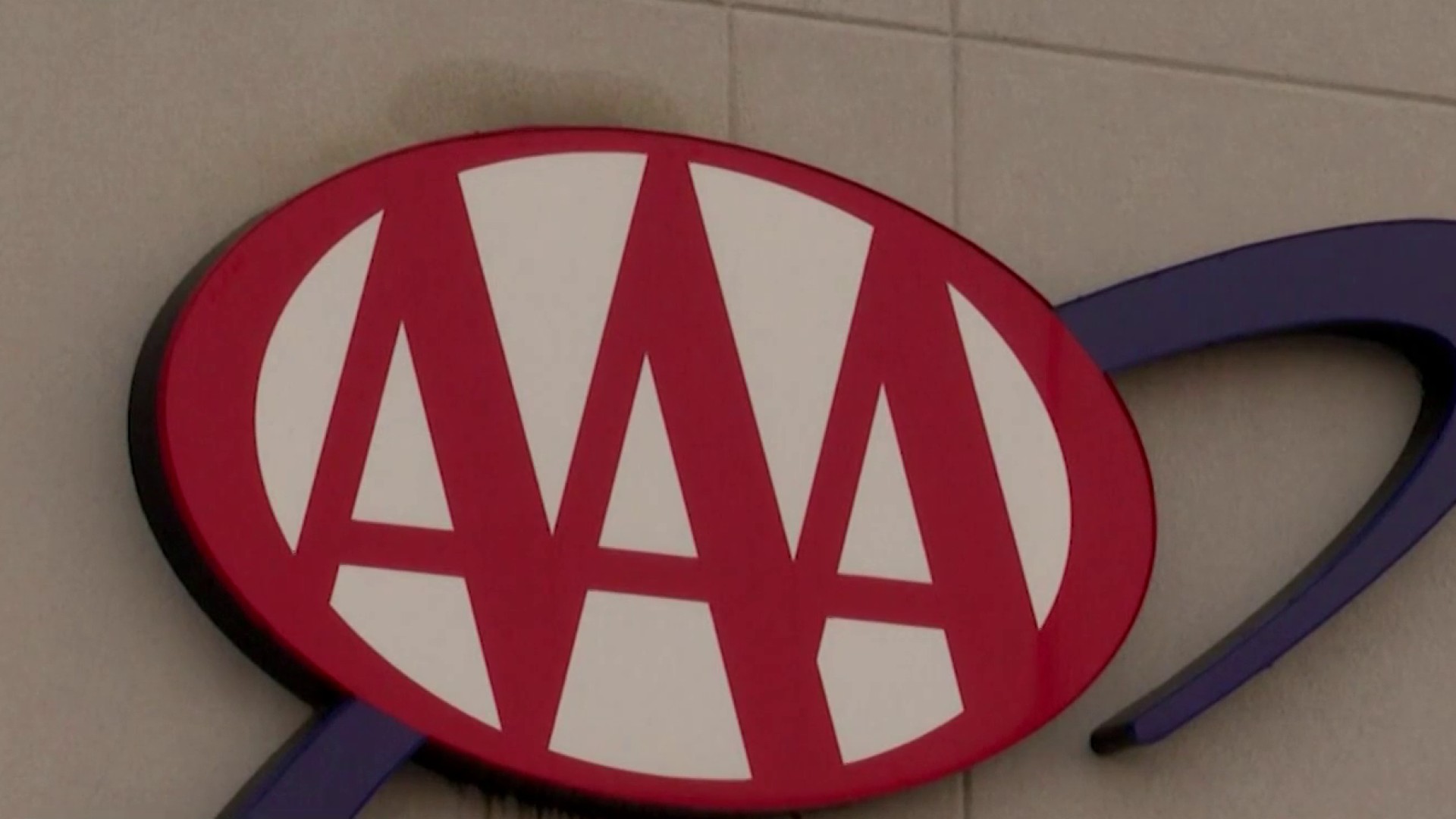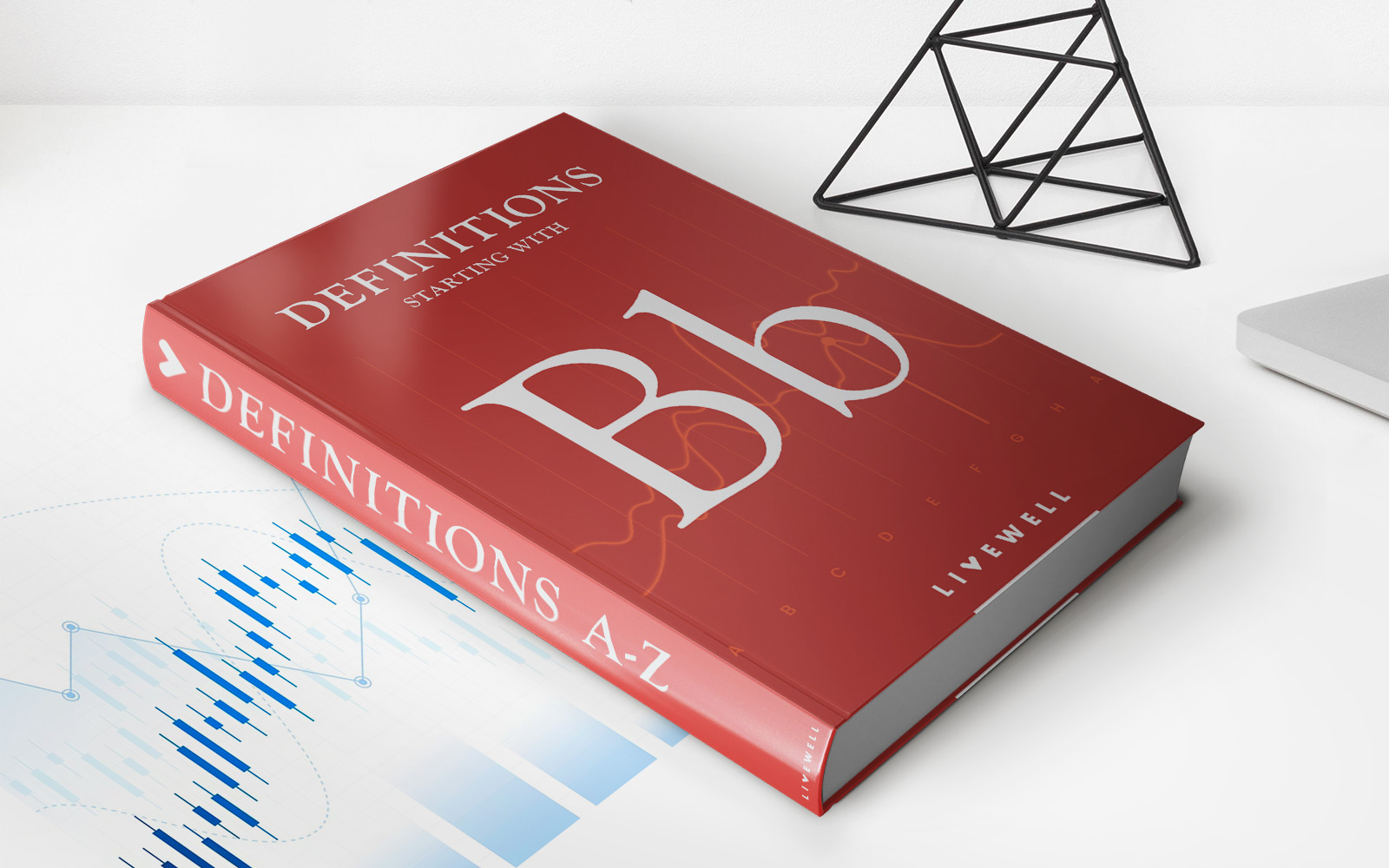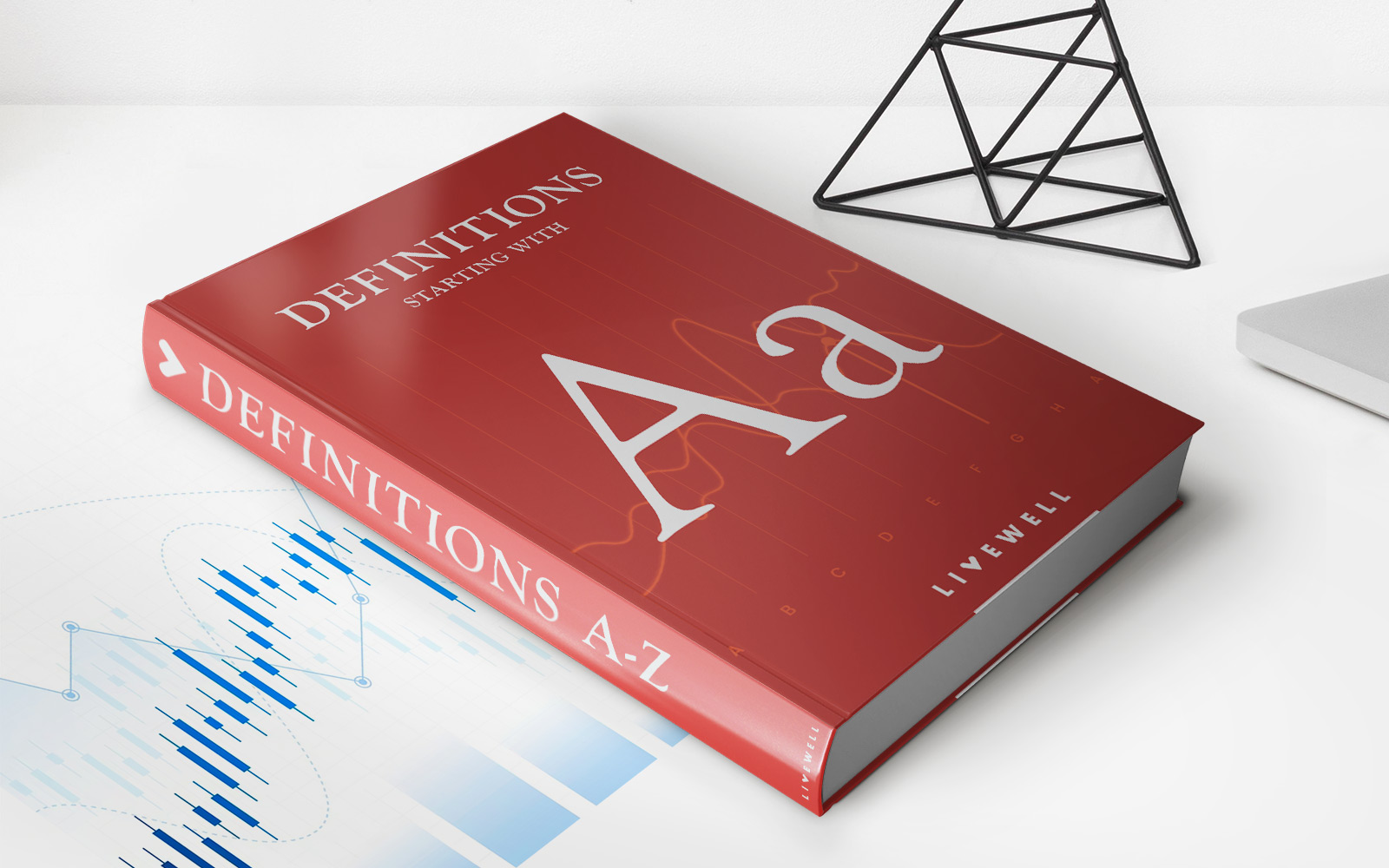

Finance
What Is A Broad Form Auto Insurance Policy
Published: October 6, 2023
Looking for financial protection? Learn about broad form auto insurance policies and how they can provide comprehensive coverage for your vehicle.
(Many of the links in this article redirect to a specific reviewed product. Your purchase of these products through affiliate links helps to generate commission for LiveWell, at no extra cost. Learn more)
Table of Contents
- What Is a Broad Form Auto Insurance Policy
- Introduction
- Understanding Broad Form Auto Insurance
- Coverage Provided by Broad Form Auto Insurance
- Limitations of Broad Form Auto Insurance
- Is Broad Form Auto Insurance Right for You
- How to Obtain a Broad Form Auto Insurance Policy
- Comparing Broad Form Auto Insurance with Other Types of Coverage
- Frequently Asked Questions about Broad Form Auto Insurance
- Conclusion
What Is a Broad Form Auto Insurance Policy
A broad form auto insurance policy is a type of insurance coverage that provides limited protection to the policyholder in the event of an accident or damage to their vehicle. Unlike traditional auto insurance policies that offer comprehensive coverage, a broad form policy only covers specific circumstances outlined in the policy.
Under a broad form auto insurance policy, the coverage is typically limited to the named insured and their vehicle. Other drivers or vehicles may not be covered unless explicitly stated in the policy. This type of policy is often used as a cost-saving measure for individuals who have older or lower-value vehicles and who may not require full coverage for their automobiles.
One of the key characteristics of a broad form auto insurance policy is that it usually provides liability coverage. This means that if you are at fault in an accident and someone else is injured or their property is damaged, your insurance will cover the resulting costs, up to the policy limit. Some broad form policies may also include coverage for medical expenses incurred by the policyholder or passengers in their vehicle.
It’s important to note that a broad form auto insurance policy typically does not cover damage to your own vehicle in the event of an accident. If you are found at fault in a collision and your vehicle is damaged, you may be responsible for the repairs or replacement out of pocket.
Furthermore, a broad form policy may have specific exclusions and limitations. For example, it may not cover accidents that occur while the vehicle is being used for commercial purposes or by an excluded driver. It’s crucial to thoroughly review the policy terms and conditions to understand what is and isn’t covered by the policy.
Overall, a broad form auto insurance policy can provide a basic level of protection at a lower cost compared to comprehensive coverage. However, it is important to assess your individual needs and the value of your vehicle before deciding if this type of policy is the right fit for you. If you have a new or high-value vehicle, or if you desire more extensive coverage, consider exploring other options such as collision or comprehensive insurance.
Introduction
When it comes to protecting your vehicle and finances, auto insurance is a necessity. It provides peace of mind and safeguards you against unforeseen expenses in the event of an accident or damage to your vehicle. While traditional auto insurance policies offer comprehensive coverage, there are alternatives available, one of which is a broad form auto insurance policy.
In this article, we will explore what a broad form auto insurance policy entails, the coverage it provides, and whether it may be the right fit for your needs. Understanding the ins and outs of this insurance option is crucial for making an informed decision about your coverage.
A broad form auto insurance policy differs from a standard policy in that it offers limited coverage, focusing on specific circumstances outlined in the policy. This type of policy is often popular among individuals with older or lower-value vehicles who may not require full coverage, cost being a primary consideration.
In the following sections, we will delve deeper into the various aspects of a broad form auto insurance policy. We will explore the coverage it typically provides, the limitations and exclusions to be aware of, and how it compares to other forms of auto insurance.
Additionally, we will discuss the process of obtaining a broad form auto insurance policy, including any specific requirements or documentation needed. By equipping yourself with this knowledge, you can navigate the insurance landscape more effectively and choose the policy that best suits your individual needs and budget.
Choosing the right auto insurance policy is a significant decision. It involves balancing protection and affordability, ensuring that you have adequate coverage without paying for unnecessary extras. Understanding the specifics of a broad form auto insurance policy and how it aligns with your circumstances is essential to make an informed choice.
Throughout this article, we will provide the necessary information to help you understand what a broad form auto insurance policy entails and how it can meet your insurance needs. By the end, you will have a clear picture of whether this type of coverage is suitable for you or if you should explore other options.
Understanding Broad Form Auto Insurance
Broad form auto insurance is a type of insurance coverage that offers limited protection for specific circumstances. Unlike traditional auto insurance policies that provide comprehensive coverage, broad form policies focus on specific aspects of coverage, often at a lower premium.
Under a broad form auto insurance policy, the coverage is typically limited to the named insured and their vehicle. This means that other drivers or vehicles may not be covered unless explicitly stated in the policy. This type of insurance is often an option for individuals who have older or lower-value vehicles and who may not require extensive coverage.
One of the primary features of broad form auto insurance is liability coverage. Liability coverage protects the policyholder in the event they are at fault in an accident and someone else is injured or their property is damaged. The insurance will cover the resulting costs, up to the policy limit. Some broad form policies may also include coverage for medical expenses incurred by the policyholder or passengers in their vehicle.
It is important to note that broad form auto insurance typically does not cover damage to your own vehicle in the event of an accident. If you are found at fault in a collision and your vehicle is damaged, you may have to bear the repair or replacement costs out of pocket.
Broad form auto insurance may also have specific exclusions and limitations. For example, it may not cover accidents that occur while the vehicle is being used for commercial purposes or by an excluded driver. It is important to carefully review the policy terms and conditions to understand what is and isn’t covered.
While broad form auto insurance has its limitations, it can still provide a basic level of protection at a lower cost compared to comprehensive coverage. It is important to assess your individual needs and the value of your vehicle before deciding if this type of policy is right for you. If you have a new or high-value vehicle, or if you desire more extensive coverage, it may be worth considering other options such as collision or comprehensive insurance.
In the next section, we will explore the specific coverage provided by broad form auto insurance, so you can gain a better understanding of the benefits and limitations of this type of insurance policy.
Coverage Provided by Broad Form Auto Insurance
A broad form auto insurance policy provides coverage for specific circumstances outlined in the policy. While the coverage may vary depending on the insurance provider and policy terms, there are common elements that are typically included in broad form coverage.
One of the primary coverages offered by broad form auto insurance is liability coverage. This means that if you are at fault in an accident and someone else is injured or their property is damaged, your insurance will cover the resulting costs, up to the policy limit. Liability coverage is crucial for protecting your personal assets and ensuring that you are financially responsible for the harm caused in an accident.
In addition to liability coverage, some broad form policies may also include medical payment coverage. This coverage provides reimbursement for medical expenses incurred by the policyholder or passengers in their vehicle as a result of an accident. Medical payment coverage can help alleviate the financial burden of medical bills, allowing you to focus on recovery rather than worrying about costs.
It’s important to note that broad form auto insurance typically does not provide coverage for damage to your own vehicle in the event of an accident or collision. This means that if you are at fault and your vehicle sustains damage, the cost of repairs or replacement will likely not be covered by your insurance policy. However, if the accident was caused by another party, and they are found to be at fault, their insurance may cover the damage to your vehicle.
When considering a broad form auto insurance policy, it’s essential to carefully review the specific coverage provided by the policy. Each insurance provider may have different terms and limitations, so it’s crucial to understand the details before making a decision.
While broad form coverage may not provide all-encompassing protection for your vehicle, it can still serve as a basic level of insurance that meets the legal requirements in many jurisdictions. If you have an older or lower-value vehicle, broad form coverage may be a cost-effective option to provide some level of liability protection without incurring the expenses of comprehensive coverage.
However, if you have a newer or higher-value vehicle, or if you desire more extensive coverage, it may be worth exploring other options such as collision or comprehensive insurance. These policies provide coverage for damage to your own vehicle, regardless of fault, and may offer additional benefits such as roadside assistance and rental car reimbursement.
Understanding the coverage provided by broad form auto insurance is crucial in making an informed decision about your insurance needs. In the next section, we will discuss the limitations of broad form insurance, so you can have a clear understanding of its potential drawbacks.
Limitations of Broad Form Auto Insurance
While broad form auto insurance can be a cost-effective option for some individuals, it’s important to be aware of its limitations. Understanding these limitations will help you evaluate whether broad form coverage meets your specific needs and expectations.
One of the primary limitations of broad form auto insurance is that it typically does not provide coverage for damage to your own vehicle in the event of an accident or collision. If you are at fault in a crash and your vehicle sustains damage, you will likely be responsible for the costs of repairs or replacement out of pocket. This can be a significant financial burden, especially if your vehicle is newer or has a higher value.
Furthermore, broad form insurance may have specific exclusions and limitations. For example, it may not cover accidents that occur while the vehicle is being used for commercial purposes or by an excluded driver. It’s important to carefully review your policy to understand what is and isn’t covered.
Another limitation of broad form auto insurance is that it typically covers only the named insured and their vehicle. If you allow another individual to drive your vehicle and they are involved in an accident, they may not be covered under the policy. This means that you could be personally liable for any damages or injuries caused by the other driver. If you frequently lend your vehicle to others, you may want to consider a different type of insurance that provides coverage for additional drivers.
Additionally, broad form coverage may have lower policy limits compared to comprehensive insurance. This means that the maximum amount your insurance will cover in the event of an accident may be lower with a broad form policy. If you are concerned about the potential financial impact of a significant accident, you may want to consider a policy with higher coverage limits.
Overall, the limitations of broad form auto insurance make it a more suitable option for individuals with older or lower-value vehicles who prioritize cost savings over comprehensive coverage. If you have a newer or high-value vehicle, or if you desire more extensive coverage, it’s recommended to explore other options such as collision or comprehensive insurance.
By understanding the limitations of broad form auto insurance, you can make a well-informed decision about the type of coverage that best suits your needs and budget. In the next section, we will discuss whether broad form auto insurance is the right choice for you.
Is Broad Form Auto Insurance Right for You
Deciding whether broad form auto insurance is the right choice for you requires careful consideration of your specific circumstances and insurance needs. While broad form coverage can offer some benefits, it may not be suitable for everyone.
If you have an older or lower-value vehicle, broad form auto insurance can be an attractive option. Since the coverage is limited to specific circumstances, it can provide basic protection at a lower cost. This can be beneficial if you prioritize cost savings and are comfortable assuming some of the risks associated with potential damages to your own vehicle.
On the other hand, if you have a newer or high-value vehicle, broad form coverage may not provide the level of protection you desire. With limited coverage for damages to your own vehicle, you could be responsible for significant repair or replacement costs in the event of an accident. In such cases, it is advisable to consider comprehensive or collision insurance, which offer more extensive coverage for your vehicle.
Your individual driving habits and usage of the vehicle should also factor into your decision. If you frequently lend your vehicle to others or use it for commercial purposes, broad form coverage may not be the best choice. This is because broad form policies typically provide coverage only for the named insured and their vehicle. If another driver causes an accident while driving your vehicle or if an accident occurs during commercial use, you could be left without coverage for any resulting damages or injuries.
Furthermore, if you are concerned about the potential financial impact of a significant accident, broad form auto insurance may not provide the level of protection you desire. The policy limits associated with broad form coverage are often lower than those of comprehensive insurance, which means that your coverage may be insufficient in certain situations. In such cases, it may be worth considering a policy with higher coverage limits.
Ultimately, the decision to opt for broad form auto insurance depends on your individual circumstances, risk tolerance, and budget. It’s important to carefully evaluate your needs and assess the value of your vehicle before making a decision. Additionally, comparing different types of coverage and obtaining quotes from multiple insurance providers can help you make an informed choice.
In summary, broad form auto insurance can be a suitable option for individuals with older or lower-value vehicles who prioritize cost savings. However, if you have a newer or high-value vehicle, frequently lend your car to others, or desire more extensive coverage, it may be recommended to explore other insurance options. Assessing your specific needs and consulting with insurance professionals can help you determine whether broad form coverage is right for you.
How to Obtain a Broad Form Auto Insurance Policy
Obtaining a broad form auto insurance policy is relatively straightforward. However, it’s important to note that the availability of this type of coverage may vary depending on your location and the insurance providers in your area. Here are some steps to help you navigate the process:
- Research Insurance Providers: Start by researching insurance providers in your area that offer broad form auto insurance. This can be done through online searches, asking for recommendations from friends or family, or consulting with a licensed insurance agent who specializes in auto insurance.
- Request Quotes: Contact the insurance providers you have identified and request quotes for a broad form auto insurance policy. Be prepared to provide information about yourself, your vehicle, and your driving history. The insurer will evaluate these factors in determining your premium.
- Compare Coverage and Costs: Once you receive quotes from multiple insurance providers, compare the coverage and costs. Pay attention to the specific terms and conditions of each policy, including any limitations or exclusions. Ensure that the coverage meets your needs and aligns with your budget.
- Decide on a Policy: Based on your research and comparison, select the insurance provider and policy that best suits your requirements. Consider factors such as customer reviews, reputation, and customer service when making your decision.
- Provide Necessary Documentation: Once you have chosen a policy, you will need to provide the necessary documentation to the insurance provider. This typically includes your driver’s license, vehicle registration, and any additional information they may require. Make sure to submit accurate and up-to-date information to avoid any issues in the future.
- Pay the Premium: After providing the required documentation, you will be asked to pay the premium for your broad form auto insurance policy. You may have the option to pay the premium in full or in installments, depending on the insurance provider’s policies.
- Receive Proof of Insurance: Once you have paid the premium, the insurance provider will provide you with proof of insurance. This document serves as evidence that you have valid auto insurance coverage and may be required by law enforcement or other parties in the event of an accident or traffic stop.
It’s important to remember that the process of obtaining a broad form auto insurance policy may vary slightly depending on the insurer and your specific situation. To ensure a smooth process, it is advisable to consult directly with the insurance provider and follow their instructions and guidelines.
By following these steps, you can obtain a broad form auto insurance policy that meets your needs and provides the necessary coverage for your vehicle.
Comparing Broad Form Auto Insurance with Other Types of Coverage
When it comes to auto insurance, there are various types of coverage available. Understanding the differences between broad form auto insurance and other types of coverage can help you make an informed decision about the most suitable option for your needs. Let’s explore how broad form insurance compares to other common forms of coverage:
1. Broad Form Auto Insurance vs. Comprehensive Insurance: Broad form auto insurance typically provides limited coverage, focusing primarily on liability protection. It does not cover damage to your own vehicle in the event of an accident or collision. On the other hand, comprehensive insurance offers more extensive coverage. It protects against a broader range of risks, including theft, vandalism, and natural disasters, in addition to covering damage to your vehicle caused by accidents.
2. Broad Form Auto Insurance vs. Collision Insurance: Similar to comprehensive insurance, collision insurance provides coverage for damage to your own vehicle. However, collision insurance specifically covers damage resulting from collisions with other vehicles or objects, regardless of fault. Unlike broad form coverage, collision insurance provides more comprehensive protection for your vehicle in case of accidents.
3. Broad Form Auto Insurance vs. Liability-Only Insurance: Liability-only insurance, as the name suggests, offers coverage exclusively for liability claims. This type of insurance protects you if you are at fault in an accident and someone else is injured or their property is damaged. While similar to broad form coverage in terms of liability protection, liability-only insurance does not provide coverage for damage to your own vehicle. It is a more limited form of coverage and may be suitable if you have an older vehicle with a lower value.
4. Broad Form Auto Insurance vs. Full Coverage Insurance: Full coverage insurance typically includes both comprehensive and collision coverage in addition to liability protection. This comprehensive policy provides the most extensive protection for your vehicle, covering damage caused by accidents, collisions, theft, and other incidents. Full coverage insurance is recommended if you have a newer or high-value vehicle and want to have comprehensive protection in various scenarios.
When comparing these different types of coverage, it’s essential to consider factors such as the value of your vehicle, your budget, and your personal risk tolerance. If you have an older or lower-value vehicle and want to save on insurance costs, broad form auto insurance may be a suitable option. However, if you have a newer or higher-value vehicle or desire more comprehensive protection, it may be worth considering other types of coverage that provide a broader scope of insurance.
Ultimately, the choice of coverage depends on your specific needs and priorities. It’s recommended to assess your circumstances and consult with insurance professionals to determine the most appropriate and cost-effective coverage for your individual situation.
Frequently Asked Questions about Broad Form Auto Insurance
Here are answers to some common questions about broad form auto insurance:
1. What does broad form auto insurance cover?
Broad form auto insurance typically provides liability coverage, which protects you if you are at fault in an accident and someone else is injured or their property is damaged. Some policies may also include coverage for medical expenses incurred by you or passengers in your vehicle.
2. Does broad form auto insurance cover damage to my own vehicle?
No, broad form auto insurance generally does not cover damage to your own vehicle in the event of an accident or collision. It primarily focuses on liability protection, meaning it covers damages or injuries to others.
3. Can I add additional drivers to my broad form auto insurance policy?
In most cases, broad form auto insurance only covers the named insured and their vehicle. Other drivers may not be covered unless specifically listed on the policy or if they are explicitly included in the coverage.
4. Is broad form auto insurance the same as full coverage?
No, broad form auto insurance is not the same as full coverage. Full coverage typically includes comprehensive and collision coverage in addition to liability protection. Broad form insurance focuses primarily on liability, while full coverage provides a more comprehensive level of protection.
5. Can I use my vehicle for commercial purposes with broad form auto insurance?
It depends on the specific terms and conditions of your policy. Some broad form auto insurance policies may exclude coverage for accidents that occur while the vehicle is used for commercial purposes. It’s important to review your policy carefully to understand any limitations or exclusions.
6. Is broad form auto insurance available in all states?
Broad form auto insurance availability varies by state and insurance provider. It’s important to consult with local insurance companies to determine if this type of coverage is offered in your area.
7. Can I switch from broad form coverage to another type of auto insurance?
Yes, you can typically switch from broad form auto insurance to another type of coverage, such as comprehensive or collision insurance. However, it’s important to consider the timing and potential implications of switching policies, including any cancellation fees or adjustments to your premium.
These are general answers to frequently asked questions about broad form auto insurance. However, it’s crucial to consult with insurance professionals or refer to your specific policy documentation for accurate and detailed information related to your coverage.
Conclusion
Choosing the right auto insurance policy requires careful consideration of your individual needs, budget, and level of risk tolerance. Broad form auto insurance can provide a basic level of coverage at a lower cost, making it an attractive option for those with older or lower-value vehicles. It offers liability protection, which covers damages or injuries to others in the event of an accident for which you are at fault.
However, it’s important to understand the limitations of broad form auto insurance. It typically does not cover damage to your own vehicle or provide coverage for additional drivers or commercial use. If you have a newer or high-value vehicle, frequently lend your vehicle to others, or desire more extensive coverage, it may be worth considering other options such as comprehensive or collision insurance.
When obtaining a broad form auto insurance policy, it’s essential to research insurance providers, request quotes, compare coverage and costs, and provide the necessary documentation. This will ensure that you find a policy that aligns with your needs and budget.
Comparing broad form auto insurance with other types of coverage, you can weigh the benefits and drawbacks of each to determine the most suitable option for your circumstances. Understanding the specifics of each policy will enable you to make an informed decision regarding the level of protection you require.
In conclusion, broad form auto insurance can be an ideal choice for individuals with older or lower-value vehicles who are looking for basic liability protection at an affordable price. However, it’s crucial to assess your needs, evaluate the value of your vehicle, and consider other coverage options before making a final decision. Consulting with insurance professionals can provide valuable insights and guidance to help you choose the right auto insurance coverage that meets your specific needs and circumstances.

